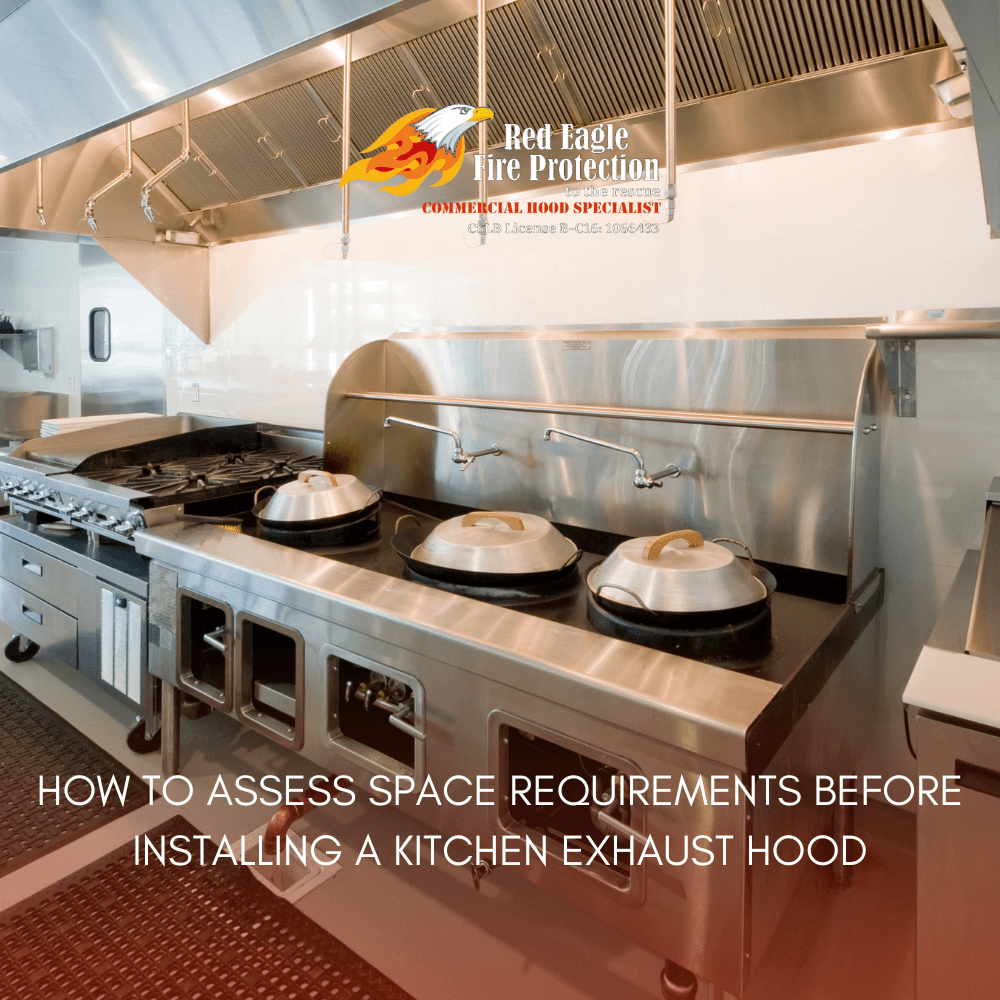Installing a kitchen exhaust hood is crucial for maintaining air quality, reducing fire hazards, and ensuring efficient ventilation in a commercial kitchen. However, before beginning the kitchen exhaust hood installation, it’s essential to assess your space requirements carefully. Proper planning ensures that the hood fits well, operates efficiently, and meets safety standards. This article will guide you through the key factors to consider when assessing space requirements for your kitchen exhaust hood.
1. Measuring the Available Space
Before you can choose the right exhaust hood for your kitchen, the first step is to measure the available space. The exhaust hood should be positioned directly above the cooking appliances and should be wide enough to capture all the smoke and grease produced. The size and positioning are critical to ensuring the system functions efficiently.
How to Measure Your Space
Start by measuring the width of your cooking equipment. The general rule is that the exhaust hood should be at least 6 inches wider than the equipment on all sides. Additionally, check the height of your kitchen’s ceiling, as this will influence how high the hood is mounted. Standard installations typically place the hood 24 to 30 inches above the cooking surface for optimal performance.
2. Ensuring Proper Ventilation Capacity
Once you’ve measured the space, it’s important to consider the ventilation capacity. During kitchen exhaust hood installation, the system must be able to handle the volume of air, heat, and smoke produced by your cooking appliances. Calculating the right cubic feet per minute (CFM) capacity for your hood will ensure proper airflow and ventilation.
Calculating CFM
To calculate the correct CFM for your exhaust hood, multiply the total width of your cooking equipment by 100. This provides a baseline for the power needed to ensure effective ventilation. Choosing a hood with the right CFM ensures that it can remove heat and smoke efficiently without straining the system.
3. Evaluating Ductwork Space
Another key factor in kitchen exhaust hood installation is determining the space needed for ductwork. The ducts are responsible for venting the air and grease-laden vapors outside the kitchen. Proper duct design is essential for maintaining airflow and preventing blockages, but it requires enough space for installation.
Planning for Ductwork Installation
Ensure that you have adequate space to route the ducts in a way that minimizes bends, as sharp turns can restrict airflow and reduce efficiency. Additionally, the ducts should be made of smooth, non-flammable material that meets safety standards. It’s essential to account for the space needed to accommodate these requirements when planning your exhaust hood installation.
4. Considering Hood Placement and Safety Standards
Proper placement of the exhaust hood is not only important for efficiency but also for meeting safety regulations. During the kitchen exhaust hood installation, the hood must be positioned high enough to prevent fire hazards but low enough to effectively capture heat and smoke. Local safety codes will often dictate the minimum height requirements for hood placement.
Positioning for Safety
Most safety standards recommend that the exhaust hood be mounted between 24 to 30 inches above the cooking surface. This distance ensures that the system captures contaminants without creating fire risks or blocking kitchen activities. Adhering to these standards is crucial for both safety and compliance.
Conclusion
Assessing your space requirements before beginning a kitchen exhaust hood installation is essential for ensuring efficiency, safety, and compliance. By measuring the available space, calculating the proper ventilation capacity, planning for ductwork, and following safety regulations, you can ensure that your kitchen exhaust hood performs optimally. Proper planning not only improves air quality and fire safety but also extends the life of your system.
READ MORE:
Why Local Regulations Are Key to Proper Kitchen Exhaust Hood Installation
Understanding Ventilation Needs for Optimal Kitchen Exhaust Hood Installation

